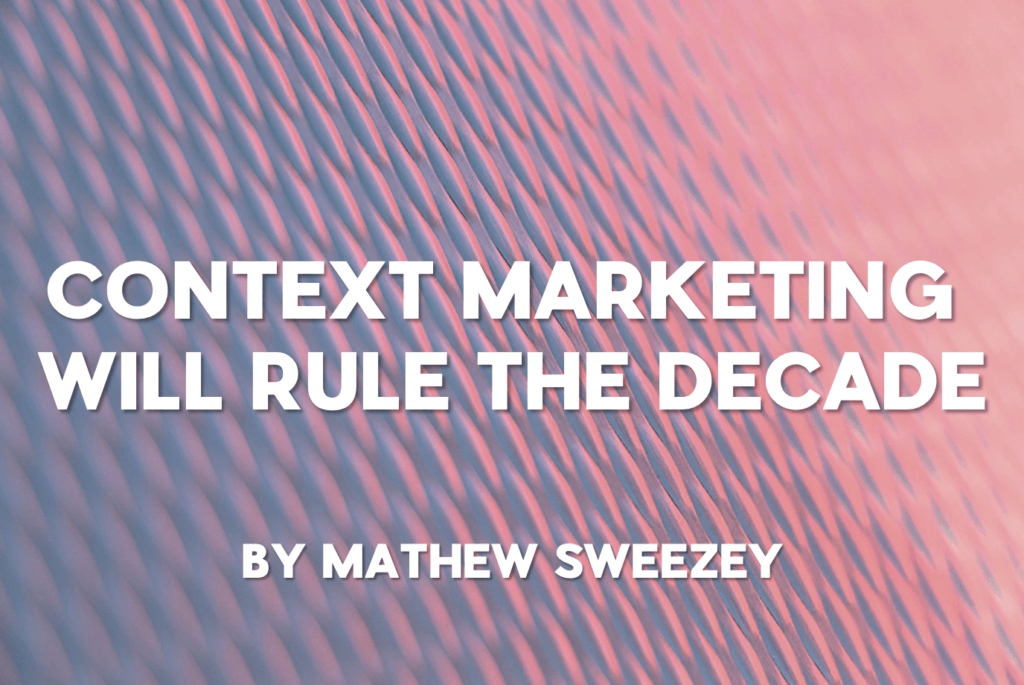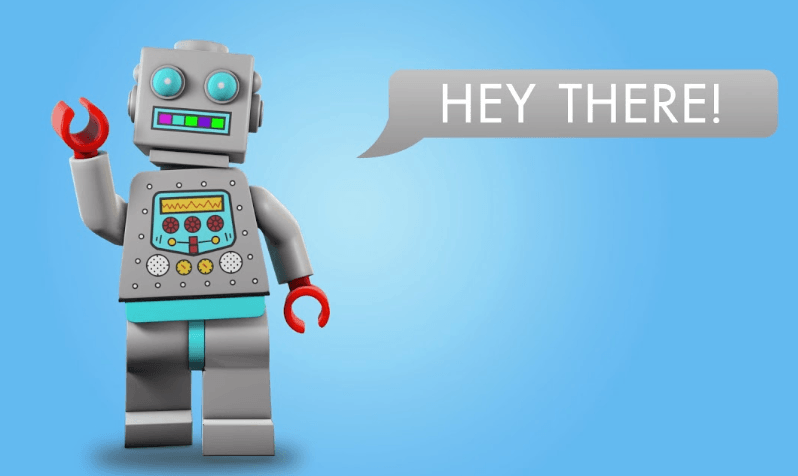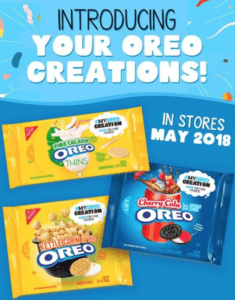
By Mathew Sweezey, {grow} Community Member
Wearing a t-shirt, slub jeans, and a new pair of sneakers, he said it first: “If content is king, context is god.” While I’d love to have been the first to utter those words, Gary Vaynerchuck beat me to it. But what is “context?” And why will context marketing revolutionize business in the next decade?
Context is the reason why a person takes action.
Let’s be honest, no consumer ever said, “I want more branded content!”
No, people engage with our content because it helps them achieve a goal in a moment. The goal could have been to answer a question, escape reality, learn, laugh, etc. It is the context of the experience, not the content, that drove the engagement.
Context marketing is a new method of marketing where brands breakthrough by crafting experiences to meet a person in that specific moment of need, and help them accomplish the task at hand. The trust built from that interaction guides the individual to the next stop on their journey, creating motivation and driving demand.
Context and Lego Land
Lego knows that along their customer journey, many parents have a hard time determining which set of toys is the best fit for their child. This leads many parents to visit the online Lego store and leave without a purchase. In this specific moment of the journey, Lego needed to create a contextual experience to break through the parental confusion and motivate action.
Enter Ralph, Lego’s gift-buying bot.

Ralph was deployed on Facebook to all Lego website visitors who had visited the site but had not bought anything in the past 14 days. The ad invited them to have a conversation with Ralph, who would help them pick the perfect gift.
The experience was a hit. The average conversation with the bot was three minutes, and the sales from the bot accounted for 25 percent of online holiday sales that year. They broke through by focusing in on a key moment of the customer journey, helping them accomplish the task at hand — finding the perfect gift — and guiding them to the next step, buying it.
It wasn’t the copy of the ad or the creative campaign surrounding it that drove the action. It was the brand’s ability to identify the goal of one consumer moment and craft a relevant and helpful experience in context.
Context Marketing — Why now?
Context marketing is happening now because of a seismic shift in the media environment.
Not long ago, content creation was limited to big publishing houses and television stations with broadcast licenses. This was the era of limited media.
But today, consumers and their devices are the largest creators of content noise on the planet, displacing the media monopoly. This is an infinite media landscape that follows a new set of rules.
The first new rule you must understand is that this new source of content isn’t just overwhelming, it’s radically different.
Noise created by brands is typically “messaging” and forced onto the market place. Just think of broadcast ads, unwanted emails, product packaging, etc.
Now think about the content created by consumers. It’s between friends in trusted networks, permissioned, highly authentic, and engaging.
On top of that, there is an entirely new source of content created for us by our devices. Think about the power of a Fitbit to alter the course of a person’s daily and life with a simple notification – “You need to take 500 more steps to reach your goal.” This device-driven content can have a profound effect on the consumer.
Context marketing and consumer behavior
The infinite media environment has changed consumer behavior.
In the limited media environment when access to information was relatively scarce, we relied on our memory to make decisions. Marketing designed to keep us “top of mind” is effective.
In the infinite environment, consumers offload memory to devices. When they need information they seek it out in the moment.
This has turned all decisions into considered purchases. Even the mundane search term “best toothbrush” is growing at a rate of 100 percent year over year. Why? Because consumers trust the information they find over the information we project.
Meeting consumers in those key moments along the journey, and helping them accomplish that task at hand, builds the trust we need to drive them forward.
AI enables the new era of context marketing
Context is now the marketing king because of artificial intelligence. The volume of noise is so high (Content Shock) that without AI, humans would simply be overwhelmed.
This is why every digital asset from Netflix to Facebook is managed by AI. The algorithms are only showing you the content that is contextual to you in the moment, the content that drives the highest engagement.
Context enabled by AI is now the crux of marketing, but how do you create it? That can be summed up in three words; with, not on.
Marketers need to shift how they think about creating content to creating context through co-created experiences. Context is a collaborative effort.
New cookies
 For example, Oreo wanted to launch new flavors of their iconic cookie. Rather than spending months doing internal market research, product testing, and finally releasing a cookie to the world with a grand marketing campaign, they did the opposite. They asked their customers to come up with the flavors they wanted to see. They gamified it, and the #myoreocreation was born.
For example, Oreo wanted to launch new flavors of their iconic cookie. Rather than spending months doing internal market research, product testing, and finally releasing a cookie to the world with a grand marketing campaign, they did the opposite. They asked their customers to come up with the flavors they wanted to see. They gamified it, and the #myoreocreation was born.
Hundreds of thousands of suggestions flooded social media. To keep the excitement going, Oreo engaged with a majority of those suggestions by responding to consumer posts, or in some cases actually creating a one-off cookie for the lucky fan. This created such a stir that when the new cookies were released they were an instant hit.
Context is part of the omnichannel
Working with content in your market is a broad stroke that can include influencer marketing, employee advocacy, and user-generated content. Each of these can be a collaboration between the brand and an individual but you can go further.
At Salesforce, we’ve found a powerful way to work with our market to create a highly contextual experience. We created the Trailblazer community, a place where anyone can upskill around our product, and other relevant soft-skills. We had an idea, then worked with our market to build the community. Now they keep it thriving.
The co-created community helps people continually improve their business, build a larger network, and improve their personal brand. Each day there are thousands of questions asked and answered by customers. More than 14 million badges (certificate of course completion) have been earned. People love Trailblazer so much many have changed their LinkedIn job title to reflect their status in the community.
The benefits we receive are so much greater than just social media exposure and goodwill. Customers who are Trailblazers spend twice as much, and remain a customer three times as long as those not engaged in the community.
The days of marketing being about pure creative genius are long gone. Now marketers must find ways to work with their audience in the context of the moment.
 Mathew Sweezey is Principal of Marketing Insights for Salesforce.com, podcast host, multiple award-winning marketers, pioneer of the marketing automation space, and author of The Context Marketing Revolution.
Mathew Sweezey is Principal of Marketing Insights for Salesforce.com, podcast host, multiple award-winning marketers, pioneer of the marketing automation space, and author of The Context Marketing Revolution.


